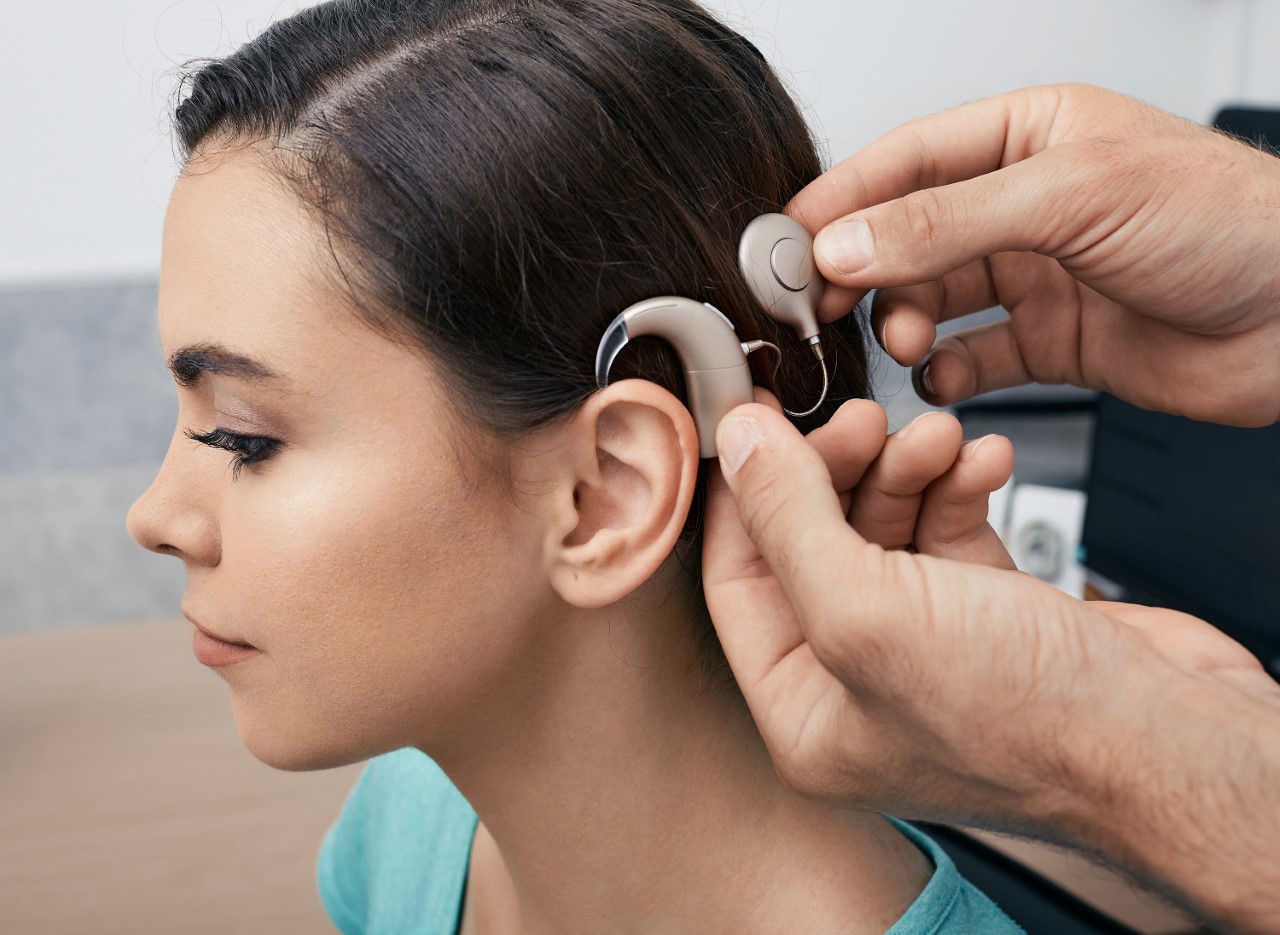DEVELOPING “SMART” COCHLEAR IMPLANTS
A research team at the Paris Lodron University Salzburg (PLUS) wants to improve electronic hearing prostheses using auditory nerve measurements.
Hearing loss is a major global problem, not only in Austria. According to the “World Report on Hearing”, published by the World Health Organization (WHO) in 2021, hearing loss costs us close to one trillion dollars worldwide.
Hearing loss can be congenital or – due to sudden deafness – can also occur later in life. Cochlear implants (CI) are commonly used to stimulate the auditory nerve and restore hearing.
Cochlear implants: Research to improve hearing
These devices use an electrode placed in the cochlea, an implant with a magnets under the skin and an exterior counterpart that is connected to an audio processor.
The CI converts sounds into electrical impulses. Hearing becomes possible again, albeit with a different hearing sensation than for those with normal hearing. This is why a lot of money is being invested in the research and continuous improvement of these devices.
Milestone in the “Smart CIs” project
One approach for improving the devices focuses on auditory processes controlled by the brain. This approach is currently being researched in the “Smart CIs” project at the PLUS’s Centre for Cognitive Neuroscience (CCNS). The project is funded by the Austrian Research Promotion Agency and the Innsbruck-based company MED-EL, one of the world’s leading manufacturers of CIs.
The Salzburg research team (Quirin Gehmacher, Patrick Reisinger, Thomas Hartmann and Nathan Weisz) and Konrad Schwarz (MED-EL) have now reached a new milestone: they invited CI users to take part in an experiment in which they had to concentrate on something they could hear or see at the same time. Measurements were taken while the study participants waited for the audiovisual stimuli to appear.
For the first time ever, the research team was able to measure this focused (selective) attention using the CI electrode on the auditory nerve. The findings have now been published in the renowned Journal of Neuroscience.
The goal: better hearing in difficult hearing situations
Among other new insights, the research team was also able to successfully train anthe artificial intelligence algorithmsystem to recognise from the measurements whether people were focusing on listening or seeing. This particular insight has important implications for “smart CIcis”. These will be able to adapt to listening situations in real time.
The idea is to make it possible for devices to use these measurements to automatically recognise which person a CI user is currently concentrating onr interacting with. The device will then amplify this person’s speech in real time and suppress other noise sources, especially in loud environments such as a crowded restaurant. This would make it much easier for CI users to understand speech in difficult hearing situations.
___________________
MED-EL, a leading manufacturer of implantable hearing solutions, has made it its primary goal to overcome hearing loss as a communication barrier. The Austrian family-owned company was founded by industry pioneers Ingeborg and Erwin Hochmair, whose groundbreaking research led to the development of the first microelectronic, multi-channel CI, which was implanted in 1977 and forms the basis for today’s modern CI. This laid the foundation for the successful company, which took on its first employees in 1990. Today, MED-EL employs more than 2300 people from around 80 nations in 30 locations worldwide.
Further information
- Publikation “Direct Cochlear Recordings in Humans Show a Theta Rhythmic Modulation of Auditory Nerve Activity by Selective Attention”
- Website MED-EL





